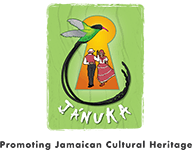JANUKA Jamaican Quadrille dance group currently wear 5 different costumes, described below. We choose what to wear, based on the formality or informality of an occasion, or on the request of our sponsors.
Different Jamaican Quadrille dancing costumes
Our costumes are meant to convey the message of a unifying force, our place of origin, our culture and group affiliation. They are worn with dignity and pride as a statement of our love and respect for our history, our culture, our people and our-selves.
Our costumes are:
- The Banadana costume
- The Banadana and Calico costume
- The Black, Green and Gold costume
- The Workshop costume
- The Ballroom costume
The Individual costumes will be described in more detail in an upcoming post.
Our costumes are reminiscent of the ritual dressing of our African ancestors who loved “dressing up” for special occasions, such as births, marriages, funerals, religious worship, state, national and local community events.
These occasions required the finest woven cloth in the right colours, artistically designed, worn with appropriately matching accessories that included elaborate head wraps or hair styles, a profusion of beads worn on different parts of the body, hand bag and leather shoes.
Costume Designs
Our costumes are designed, using cost effective fabrics, i.e. bandana, calico, white cotton, white lace, satin and muslin, to represent the simply and humble existence and hardworking lifestyles of our ancestors during the 18th and 19th centuries.
On a practical level, they are intended to enhance the shape and sizes of each individual wearing them, be easy and comfortable to wear and maintain modesty.
Vibrant Colours

Colours used in Januka’s Costumes
The bright colours of our costumes make us happy, and remind us of our ancestors’ love of vibrancy and their determination to survive enslavement. On special occasions, when permitted, they would wear vibrant colours, stylishly designed to:
- acknowledge and respect their diverse ethnicity, cultures and homeland
- look and feel good about themselves
- communicate their status within their “slave” communities
- temporarily escape their poverty and subordinate position within colonial society
- demonstrate their abhorrent feelings towards the institution of slavery that denied them basic human rights
- communicate their courage, strength and resistance plans especially when they wore “Red”.
- communicate their spiritual and religious affiliation especially when they wore “White”









